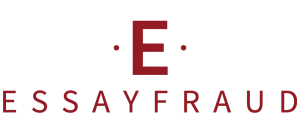AMA citation format. How to Cite Your Medical Paper
AMA stands for American Medical Association. It is an organization that provides standards for scientific and medical writing. This format is used by experts in the fields of medicine, pharmacy, biology, and others. This format is also used by authors to make their scientific work easier to read and understand. This format includes rules for how titles, abstracts, medical terms, and more should be written. The AMA paper format is different from the APA or MLA formats that are commonly used for school work. The AMA format is more complicated and takes more time to complete properly. Here are a few things you need to know about the AMA paper format: 1) Title: The title must accurately and clearly describe the content of the article. Medical terms must be used correctly when defining your article title. 2) Abstract: An abstract is a brief summary of your article containing the research objectives, methods used, main results and final findings. 3) Medical Terms: Medical terms should be used correctly while writing your article to make it easy for your readers to understand. 4) Quotations: Quotations must be traced to the original source to avoid plagiarism or copyright infringement. 5) References: References should be accompanied by a link to the original source to make it easily accessible to your readers. By adhering to these rules, you will make your scientific writing more understandable and accessible to your readers!

What is the AMA format?
The AMA format includes the use of simple and clear language, with an emphasis on the right words. This also includes using correct punctuation and accurate spelling. This format has a strict structure for the sections of the paper, including the title, abstract, introduction, methods, results, discussion, and conclusion. Each section must be written in a different way to effectively convey information to the reader. This format also requires authors to include references from other sources to support their arguments.
1. Correct references can help increase the credibility and validity of your research. The AMA reference format allows you to cite relevant sources in a way that complies with industry standards. 2. The AMA reference format also helps avoid plagiarism, as it ensures that you give others credit for the ideas and information you use in your research. 3. Using the AMA reference format will also make it easier for readers to find sources used in your research, so they can track down more information on the topic.
- To logically structure your paper
- To make it easier to follow your text
- To follow guidelines for your arguments and thesis statements
- To credit the name of a talented contributor
- To avoid problems with plagiarism
The AMA format consists of: 1. Title: The title must describe the contents of the paper clearly and briefly. 2. Abstract: Abstract is a brief summary of the paper which includes objectives, methods, results, and conclusions. 3. Introduction: The introduction contains the research background and the reasons behind this research. 4. Methods: Methods contain a description of how the research was conducted, including the study design, sample population, instruments used for data collection, and data analysis techniques used. 5. Results: This section contains the results of the data analysis that has been done previously. 6. Discussion: The discussion contains the interpretation of the results and the implications for clinical practice or other applications of the findings of this study. 7. Conclusion: Conclusion is a brief summary of the main findings in this paper and their implications for clinical practice or other applications. 8. References: References contain a list of sources used to support the arguments or findings in this paper.
Need help WRITING RESUMES?
Just submit your requirements and choose a resume writer. That’s all we need to write a winning resume for you.
Basic formatting of AMA papers
The author must also state the author’s name, title, place and year of publication. If the source cited is an article, the author also needs to state the name of the magazine or journal where the article was published.

General rules for AMA formatting
1. Year 2. Month 3. Day 4. Hour 5. Minute 6. Second- Double space your text
- Use 1″ margins
- Font size must be 12 and can be any font type. You can use two types of Type (Serif for Body Text and SANS Serif for titles and subtitles) with proper use of styles, such as Bold and Italics for scholarly publications. (5.22.4)
- Use a 1/2″ indent
- You must add page numbers – start with the title page. Pages must be numbered sequentially. Page numbers are usually placed in the upper right corner.
- References must be listed and numbered in the order they were cited in your paper.
Ground Rules for AMA Quotes
- The superscript number will make it possible to find the complete reference on your AMA’s “Reference List” page.
- Each citation number must match the reference number.
- Apply Arabic superscript numerals.
- Full references must begin with the appropriate number.
- The way references are written depends on the type of source students have to cite; Knowing how to cite a website doesn’t mean a student automatically knows how to cite a book.
- Bibliographical entries must have the author’s last name and first & middle initials without punctuation.
- Apply commas to add more than one author. Example: 3. Lawrence T, Barman PJ. Cardiac denervation in diabetes. BMJ. 1973; 4: 584-586.
- Apply Sentence Cases to Titles – no exceptions (Capitalizes the first word of the title – no need to do it with the rest of the words. Example: Go with the wind).
- Abbreviations and italics of material titles based on the National Library of Medicine Database.
- Separate each reference by period into bibliographical categories.
- Reverse the author names. Use initials for first and middle names without putting a period between initials. It should be like this: SouthLastName, firstinitialmiddleinitial.
- Add the issue number in brackets after the volume number (for journals).
Rules regarding punctuation marks
- Use commas in cases where the item is a sub-element of a bibliographical component or a set of related components such as an author’s name.
- Use a semicolon if elements in a category vary from one another (release date & source title) / If multiple occurrences of related components are available in the group + before the volume identification information.
- Use a colon before the publisher name, between titles and subtitles, and after connecting phrases (e.g., “at,” “served at”).
References in the AMA Bibliography
This also includes using proper styles for references, such as using APA or MLA formats.
NLM is the standard used by the National Library to classify and index journals. This standard allows users to easily find the journal they are looking for. This standard also helps librarians to manage their collections more efficiently.
1. Quotations must be written in bold or italic. 2. Each quote must begin with the name of the person who made it, followed by quotation marks (“). 3. After the name of the person providing the quote, write down the sentence or phrase they said. 4. If you want to create a new paragraph after the quote, use an indent to mark that it is part of the quote. 5. If you want to include additional information about who said the quote, use brackets at the end of the quote and include the additional information within it.

1. Do not use impolite or abusive language. 2. Do not use words that are racist, discriminatory, or harassing. 3. Do not send messages that are not relevant to the topic of discussion. 4. Don’t post personal information about other people without their permission. 5. Do not post links to websites that are not related to the topic of discussion or spam in online forums. 6. Do not use the forum for the purpose of promoting a particular business or product without the permission of the forum owner.
- Acronyms, abbreviations, and initials: Instructed to use acronyms, abbreviations, and initials, unless they are well known. This may include accepted units of measurement and some well-recognized terms. If you use acronyms, abbreviations, or initials, say them with the first use, even if they’re well known. Don’t put a period between the letters of acronyms, abbreviations, or initials. Mentioned names must always appear as full names in the manuscript text. If included in the reference, use a two-letter abbreviation (first name and initial middle name).
- Number: Numbers (1, 2, 3, etc.) must be used in all writing, except when: the number begins a sentence or title. To indicate the time, use AM or PM in lowercase (6 p.m.). Conventional 12 hour clock time is preferred. However, a 24-hour or military convention can also be used if you need to show the exact time.
- Date: When you need to provide the date in text, it is preferable to use numbers for the day and year, and write the month – e.g. October 2, 2020. If you are using a date in a table, you can use the number for that month (eg 4/2/2010).
- Measurement: For writing measurements, it is preferable to use standard SI measurements (international system of units). Numbers are always written in plain text. There’s a space after the number and before the unit, and it never menses after the unit (unless it ends a sentence). Don’t include commas in longer numbers (eg 1600 km instead of 1600 km).
In-Text Citations: Format and Rules
Example 1: “When I met with the doctor, he told me that ‘You have to be careful and follow the rules set by the government.’” (Dokter, 2020). Example 2: “I was very happy when I heard that we would be able to get back to work again” (Personal, 2020).

AMA Reference List
The reference list format for AMA papers includes the following information: 1. Author’s name (if any). Publication year. Title of book / article / report / document. Publisher name, place of publication, and page number (if any). 2. Author’s name (if any). Publication date. The title of the article or web page. URL (if available). 3. Author’s name (if any). Publication date. Film / video / television program titles. The name of the producer and the name of the television station or website showing the film / video / television program.
The AMA Reference List format requires authors to include the following information: author’s name, year of publication, title of article or book, name of journal or publisher, volume and page number (if applicable). Authors should also include links to online sources if they use them. Example of an AMA Reference List: ¹Smith, J. (2020). The Impact of Social Media on Mental Health.
General rule
- References must be listed numerically in the order they appear in the text of your paper.
- The type, order, and format of information you must include in your list of references will vary depending on the type of source from which you are borrowing information and/or ideas.
- Regardless of the type of source you refer to, you may not include a comma between the last name and first initial of an author, editor, or director.
- If you borrow a piece of information and/or an idea from a specific page or range of pages in a print job or a recognized web resource, you must identify the page at the end of the appropriate reference.
- When you identify page numbers, or numbers, in entries in your reference list, be sure to include the numbers in full (eg use 111-112 instead of 111-2).
Digital document
1. Author’s Name: The author’s name must be listed at the beginning of the reference. 2. Article Title: The article title must be listed after the author’s name. 3. Journal Name: The digital journal name must be listed after the article title. 4. Year of Publication: The year of publication of the digital journal must be listed after the name of the journal. 5. Volume and Number: The volume and issue number of the digital journal should be listed after the year it was published. 6. Start and End Pages: The start and end pages of the referenced articles should be listed after the volume and issue number of the digital journal. 7. URL or DOI (Digital Object Identifier): The URL or DOI for the referenced article must be listed at the end of the reference, before a closing bracket ().
- Article title and subtitle (as applicable)
- Journal names are abbreviated and italicized
- Year
- Volume number
- Build number
- Part or supplement number, when applicable
Inclusive page number – do not omit digits from the inclusive page number. The year of publication is followed by a semicolon; The volume number and issue number (in brackets) are followed by the colon; The starting page number is followed by a hyphen, and the ending page number is followed by a period.
Online government and organization reports are reports issued by governments or organizations to convey information about their activities. These reports usually contain information about programs, projects, policies, and results that have been achieved. This report can also contain statistical data on social, economic and environmental conditions in an area. Some examples of online government and organization reports include the US Department of Health annual reports, World Health Organization (WHO) annual reports, and World Bank annual reports.
Print materials
1. Author’s Name: The author’s name must be listed at the beginning of the reference. 2. Book Title: The book title must be listed after the author’s name. 3. Edition: If any, the edition of the book must be listed after the title of the book. 4. Publisher: The name of the publisher must be listed after the edition (if any). 5. Year of Publication: The year of publication must be listed after the name of the publisher.
